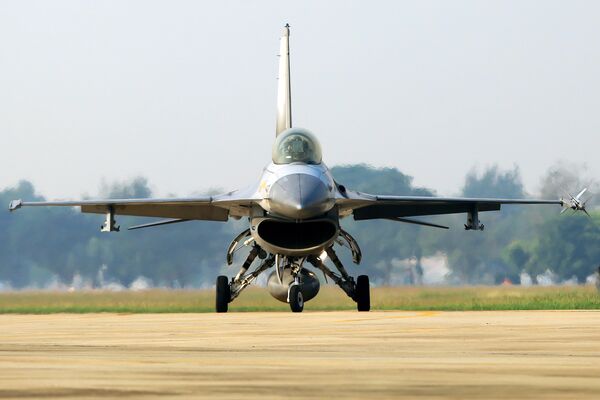
The Royal Thai Air Force currently operates three squadrons of F-16A Fighting Falcons. At least 12 out of 49 active F-16s are due for retirement in the next few years. (Thanh Ho/Getty Images)
Lockheed Martin has proposed technology upgrades and direct industrial investment as part of offsets in its proposed sale of F-16V Block 70/72 fighter aircraft to the Royal Thai Air Force (RTAF), according to a source familiar with the situation.
The RTAF seeks to procure an initial batch of four fighter aircraft to partially replace ageing F-16A/B Block 15 Fighting Falcons operational with 102 Squadron at Korat airbase. The new aircraft are to be acquired from 2025 to 2034.
Janes understands that to support its F-16V offer to the RTAF, Lockheed Martin has proposed installing onto F-16A/B aircraft that will remain operational the Link 16 secure datalink system and Mode 5 identification friend-or-foe (IFF), a radar-based identification system.
This will render F-16A/Bs compatible with the new F-16V Block 70/72 aircraft, according to the source. Combining Link 16 and Mode 5 IFF systems together “creates an interoperability solution which will enable both [F-16] fleets to talk to each other,” the source added.
Lockheed Martin submitted its updated offsets proposal to Thailand in late August. The company has valued its offsets proposal at USD1.7 billion, according to the source.
The upgrade is also expected to enhance the interoperability of RTAF legacy F-16A/Bs in deployments with aircraft from other regional air forces similarly equipped with the Link 16 system, the source said.
Other elements of the proposed offset package include offers to upskill through university partnerships and to invest in Thailand's aviation industry, the source said. Janes
Looking to read the full article?
Gain unlimited access to Janes news and more...







